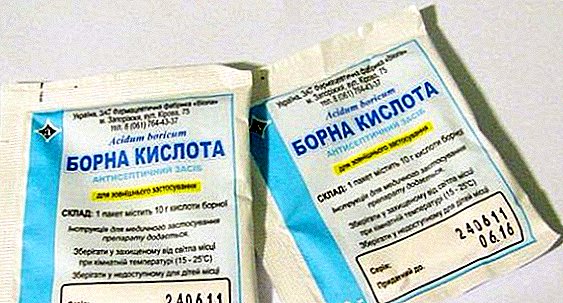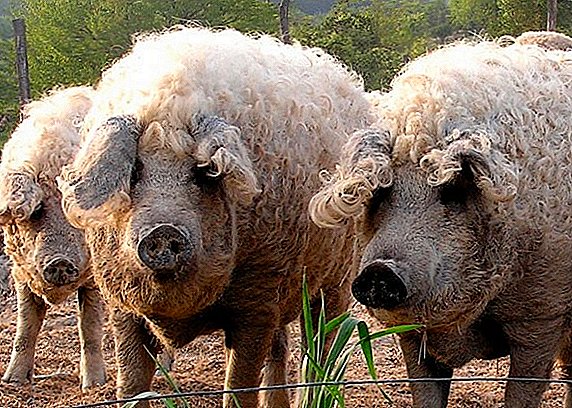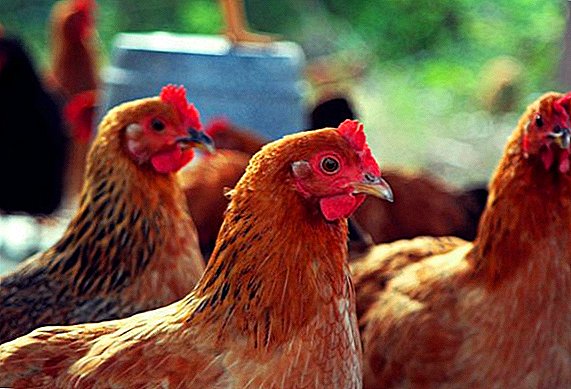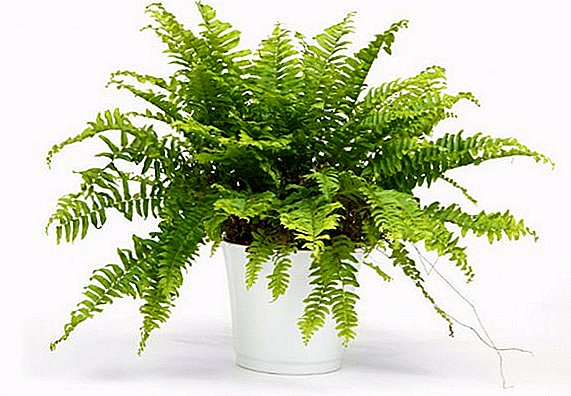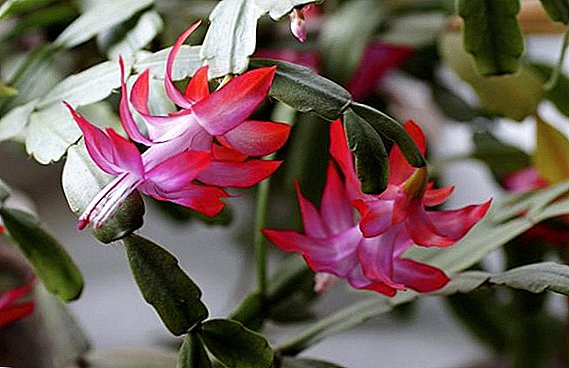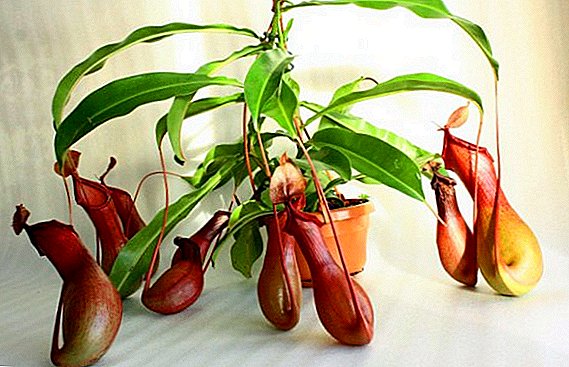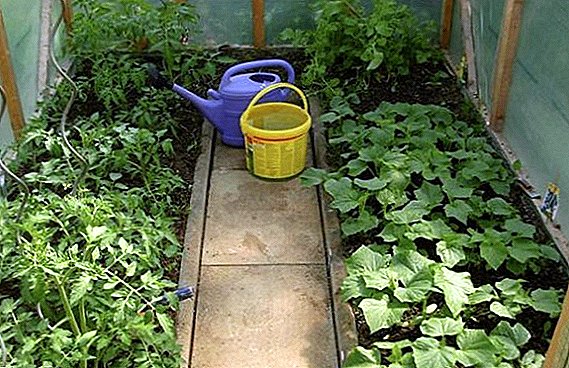 One of the common occupations in agriculture was the year-round cultivation of various crops in the greenhouse. This can not only provide the family with fresh vegetables all year round, but also bring additional income. Today, already in the public domain, there are certain developments that will help start a greenhouse business, even for inexperienced beginners.
One of the common occupations in agriculture was the year-round cultivation of various crops in the greenhouse. This can not only provide the family with fresh vegetables all year round, but also bring additional income. Today, already in the public domain, there are certain developments that will help start a greenhouse business, even for inexperienced beginners.
Parameters of the greenhouse for the joint year-round cultivation
Today, the following types of greenhouses are distinguished:
- Without heating, which accelerates the cultivation of plants in the summer. They are greenhouses covered with foil. The purpose of their use is the creation of favorable conditions for the development of vegetables and herbs.
- Capital buildings in which you can harvest all year round. They are built for use over several years, so they should have maximum capacity and sufficient strength of materials.
 Important conditions for efficient cultivation of plants in the greenhouse are:
Important conditions for efficient cultivation of plants in the greenhouse are:
- quality material for building. This will save money for several years and not waste time on building repairs;
- the presence of a double door to protect against the cold. Too sharp temperature drops are extremely undesirable for normal plant growth;
- lighting. In the building, which is used all year round, you need to have additional light in the period when natural light is not enough. Use conventional lamps or special fitolampy;
- land. Must be prepared in advance in view of all the plants that will be grown. It is necessary to take into account that each plant has its own requirements, however, universal mixtures can also be applied;
- the presence of a system for constant watering. The temperature of the water is important. Therefore, you need to put the tank where the water will naturally heat up to use, and then in small portions to flow into the ground;
- greenhouse ventilation. In order not to get a draft, opening two doors, it is better to make the vents. Their correct location will allow you to remove the heated air, while the door will go fresh. The ideal solution is a fan with additional features;
- heating for heating in cold weather. You can use solar heating and with the help of certain devices. The first heating is supplemented with manure, which, when decomposed, radiates heat and can heat the soil to 20 degrees. Devices for heating are selected individually. The most common are: boilers, wood burning stoves, heaters or infrared heaters;
- shading is just as important as other conditions, since each plant has periods when they need a minimum amount of light.
We recommend to learn how to make automatic ventilation of the greenhouse with your own hands.

Did you know? The first greenhouses appeared in ancient Rome, however, they were mobile and were carts into which they planted plants. They were taken out in the sun in the afternoon, and were driven into warm rooms at night.
Advantages and disadvantages of co-location
Proper distribution of crops will help create a rational distribution of vegetables. This method of cultivation has the following advantages:
- Savings and up to a limited landing area.
- The presence of vents and systematic irrigation creates individual adjustment of the level of heating and cooling, as well as moisture.
- Some moody cultures grow well only in closed land.
- Reduction of expenses for light and heat when using several greenhouses at once.
 However, despite all these advantages, there are several disadvantages to this method of landing:
However, despite all these advantages, there are several disadvantages to this method of landing:
- There is a danger of thickening landings and the likelihood of unwanted pereosleniya.
- A small greenhouse will not give full conditions for all plants.
- Vegetables can be affected by pests that are not typical for them.
What crops can be grown together
For maximum yield and trouble-free cultivation in the same greenhouse, it is necessary to proceed from the compatibility of the temperature and humidity of the environment, the volume of occupied space. The base plant is selected, and then the "neighbors" friendly to each other are selected to it, which will give a wonderful harvest from comfortable coexistence. Most often in a greenhouse, cucumbers, tomatoes, peppers, and eggplants are considered basic plants. Consider how to place them in the neighborhood, so that all cultures grow well:
- Tomatoes. This culture loves the average temperature in an enclosed space, good ventilation, and is good with regular feeding. Watering should be regular and only at the root. Good companions will be: early cabbage, which at the end of spring will please a good harvest, and in the future will not interfere with the growth of tomatoes. It is recommended to plant onions or greens around tomatoes, melons and gourds are also suitable.
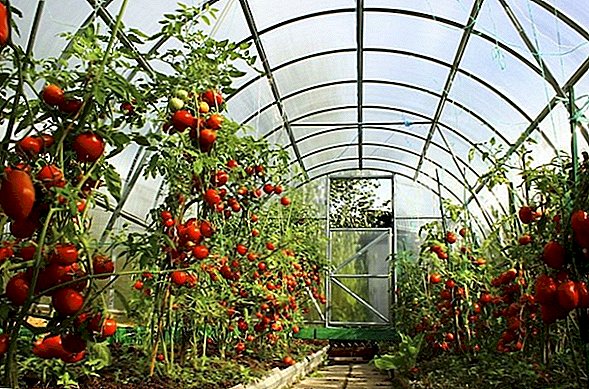 From herbs herbs tomatoes do not get along with fennel and dill. If there is an opportunity, it is better to plant in different places, well, if there is no other way out, then it is better to sit on different sides of the bed, it can be divided into several rows of peppers, and even better - hang a curtain of plastic film, thereby separating the tomatoes.
From herbs herbs tomatoes do not get along with fennel and dill. If there is an opportunity, it is better to plant in different places, well, if there is no other way out, then it is better to sit on different sides of the bed, it can be divided into several rows of peppers, and even better - hang a curtain of plastic film, thereby separating the tomatoes. - Cucumbers. They love humid, warm air, sprinkling and regular feeding. For a good partnership with other crops, this vegetable should be grown only on a trellis - and cucumbers are good, and there is plenty of room for dill, parsley, basil and other spices. These vegetables will make friends with bell peppers, but they need to be planted closer to the ventilated areas. Eggplants, as well as cabbage will be useful in this neighborhood. Radish in partnership with cucumbers will protect plants from leaf beetles and spider mites.
- Peppers and eggplants (solanaceous crops) love heat, moisture and regular feeding.
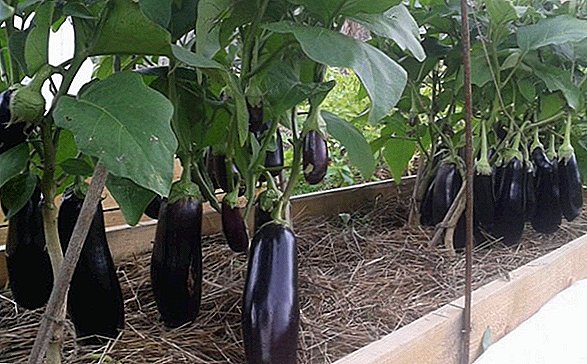 Green onions will be excellent companions to these plants. Good neighborhood with cucumbers and tomatoes. The following planting options are possible: tomatoes, peppers, herbs, melons, beans, peas; cucumbers, peppers, eggplants, cabbage, zucchini, beans.
Green onions will be excellent companions to these plants. Good neighborhood with cucumbers and tomatoes. The following planting options are possible: tomatoes, peppers, herbs, melons, beans, peas; cucumbers, peppers, eggplants, cabbage, zucchini, beans. - Zucchini can grow with almost all plants. The disadvantage is that they take up a lot of space.
- Strawberries planted next to greens, garlic and cucumbers.
We recommend to get acquainted with the peculiarities of growing tomatoes and cucumbers in the greenhouse.
Read about the nuances of growing strawberries in a greenhouse.

Important! Incompatible can be not only different types of vegetables, but also a variety of varieties of the same culture. Therefore, it is necessary to get acquainted with the conditions of their cultivation and compatibility before planting.
| Culture | Good companions | Bad companions |
| Cucumbers | Rice, gopokh, selderey, salat, kapysta, kykyryza, Baphattsy, pepper, eggplant | Shalfay, ukpopp, mint, fanhelle, primidory |
| Medimors | Chapel, basil, walnut, luk on the feather, polish on greens, mountains, shale, early cap, spinach, salat, beans | Potatoes, fennel, dill, cucumbers |
| Pepper | Basilik, mopkov, darling, dushitsa, mayoran, luk, bakhattsy, koriyandp, kostovnik, nastyrtsiya | Funkhel, kolrabi, façol |
| Baklazhany | Gopokh, façol, plank, basilicus, ectragon, thistle, onion | |
| Apbyz and melons | Kykypyza, gopokh, speed, luminosity, tracks | Ogyrs |
| Gopokh | Musk, kykpyrzy, ogyrtsy, baklazhany, salat, radic, spinach, feeder, kartofel | Lucky Cheek |
| Kabachki | Factor, kykypyza, mint, texture, speed | Carpentry |
| Capa | A façade, a candlestick, a celebrity, a mashka, a crocodile, a scoop, a mint, an embedding, a luk, a dushita, a cartoons, a dummy. | KGB |
| Carpentry | Factor, kapyusta, kykyryza, plan, luk, bakhattsy, speed, koriandp, satyration, len | Primidory, ogiprtsy |
| Calabi | Cvekla, lyk, ogyrtsy, ukkopp, mint, shalfey | Factor, Remorders |
| Kykypyza | Gopokh, melon, pumpkin, fazol, saint souls, lupine | |
| Façol | Kykyryza, capy, colorfilm, luminaire, pumpkin, carrot, mummy, tree, chaber, texture, water heater, bakhattsy | Fanhel, cast |
| COLOR CAPYSTA | Carpet, radis, luk, Lights, façade, sellers, crock, mash, mint, cake, nastyrtsiya, shower | Medimopry |
Joint Culture Requirements
To plants that will grow in the same greenhouse, there are such requirements:
- They must be of the same family. In another case, the onset of universal disease and pest damage is possible.
- They must have different vegetation characteristics. This will help make the most of the land and avoid shading.
- Plants in the neighborhood should suppress, not spread diseases and ward off pests.
- Fit must be compatible.
Greenhouse care rules
Vegetables that grow in the greenhouse need special care. Every year it is necessary to carry out the replacement of the top layer of soil or in the autumn to dig over 1 square meter. m square bucket of humus or compost, and add lime (400 g) to reduce the acidity of the soil. In the spring, the soil is loosened again and watered with a solution of potassium permanganate under the film, which is removed before planting the seedlings. 
Fertilizer
In different periods of growth and development, plants need some additional feeding.
- Cucumbers. After planting, after 15 days, the plants need fertilizers with a high nitrogen content. The active development of lashes requires potassium, and before fructification the plant will need phosphorus. Organic matter is used under the root and mineral fertilizers on the sheet or in the ground. During the season feeding are made 4 times: after planting, flowering, at the beginning and during fruiting.
- Tomatoes. For the entire season, these plants need to be fed 3-4 times: during budding, ash is used (balance in potassium, phosphorus and calcium soils), ovary formation (after 20 days), during ripening and fruiting.
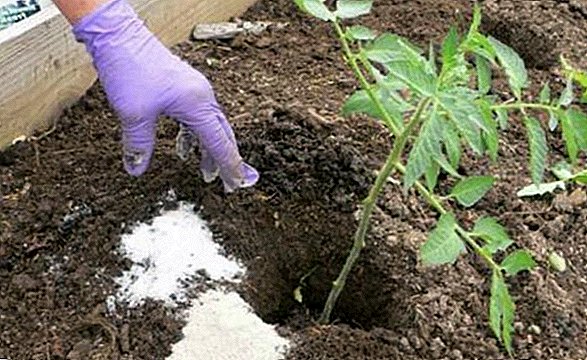 You can also fertilize with a solution of fermented chicken manure (1:20), using iodine as a fertilizer will also allow you to disinfect the soil (3 ml per 10 liters of water).
You can also fertilize with a solution of fermented chicken manure (1:20), using iodine as a fertilizer will also allow you to disinfect the soil (3 ml per 10 liters of water). - Yeast, which contains up to 65% of protein compounds, can be used as a top dressing for cucumbers and tomatoes. They are not only environmentally friendly fertilizer, but also an excellent growth promoter.
- Pepper. Culture is demanding of fertilizers, without them there will be neither quantity nor quality, the main thing is not to overdo it. It is recommended to apply fertilizer no more often than after 15 days. The first feeding is carried out after 15 days after planting the seedlings in the ground during the formation of buds. From organic - a solution of chicken manure, mineral additives - superphosphate, ammonium nitrate and potassium.
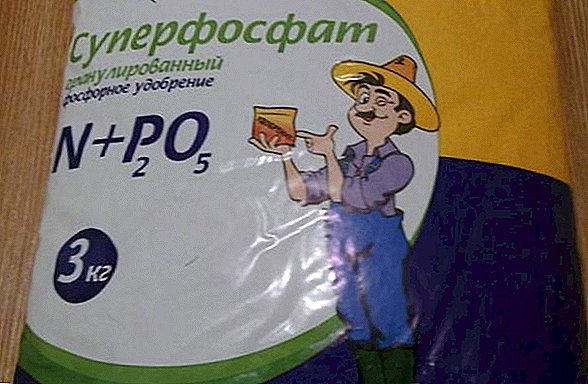 The second feed should include nitrogen. These fertilizers are applied in a dissolved form to the soil. Compulsory foliar treatment with urea solution, which are absorbed by the plant faster and stimulate the development of fruits.
The second feed should include nitrogen. These fertilizers are applied in a dissolved form to the soil. Compulsory foliar treatment with urea solution, which are absorbed by the plant faster and stimulate the development of fruits. - Eggplant. Hybrid varieties require frequent fertilization, without them, the yield and quality of vegetables cannot be obtained. The first feeding is carried out 15 days after planting the seedlings using a solution of mullein, litter or mineral fertilizers. In the future, fertilizers are applied from the moment of growth of the fruit. The same formulations with the addition of phosphorus and potassium are used.
Read more with recommendations on feeding cucumbers, peppers and tomatoes in the greenhouse.
Find out in what proportions it is necessary to use yeast to feed pepper, cucumber and tomato.
Important! All applied top dressings in the soil are carried out on previously watered soil.
Watering and humidity
Plants relate differently to the water-air balance in an enclosed space:
- Cucumbers. Before the formation of the fruit, the humidity should not be lower than 80%, and during the ripening period of cucumbers it should be kept at the level of 90%. This is achieved by frequent irrigation without stagnant water. Water should be on average + 20 ... +25 ° С, and the frequency of these procedures is 1 every 3 days before fruiting, during the period from the formation of the ovary to the harvest, it is daily at the rate of 6 liters per 1 square meter. m square. Watering is carried out better by sprinkling to feed all parts of the plant with moisture.
- Tomatoes. This culture does not like humid air, so watering should be carried out only at the root with the norm: before flowering - 4 liters per square square, during flowering - 12 liters. Humidity for the growth of tomatoes should be within 50%, and the soil - 90%. Watering should be carried out with a water temperature of about +22 ° C.
- Pepper. For this plant, it is necessary to withstand a humidity of 60% and a soil no higher than 70%. Watering is best done in the morning with warm water at intervals of 5 days. During flowering, the plant can not be watered, because there will be no ovaries. During their formation, the moisturizing procedure is carried out 2 times a week. During the period of growth and fruiting, you need to take a short break in watering to stimulate new inflorescences - further watering as during the formation of fruits.
- Eggplant. The plant, like pepper, loves moisture, but not the humidity of the air (no more than 70%), so watering is carried out once a week before fruiting, and during fruit ripening 2 times a week. Water should be warm (up to +23 ° C). The procedure is carried out only at the root.


Light mode
Light day plays an important role in the growth and development of plants:
- Cucumbers. Culture refers to the plants of the short day (10-12 hours). At such a time, most varieties increase fructification and accelerate development, while at daylight hours until 16 o'clock, fruiting does not develop, and, consequently, yield decreases. Natural light for 12 hours is especially important up to 25 days after emergence.
- Tomatoes the most demanding to the light mode. Day length for good development should be at least 14 hours. A shorter light regime leads to plant stretching, delayed flowering, and ovary formation. Tomatoes like to hit the direct rays of the sun, and not diffused light.
- Pepper. For this culture, 12 hours of light is sufficient; with a longer light period, the budding process is slowed down.
- Eggplant. Plants short daylight hours - no more than 12 hours. With a longer period of illumination, the culture simply does not bear fruit.

Important! Extend the light day in the greenhouse can, using artificial lighting with the use of halogen, mercury or sodium lamps, always with a reflective element.
Sprinkling and pest control
A warm environment with plenty of moisture is suitable not only for the growth of vegetables, but also loved by various pests. The emergence of problems contributes to the violation of temperature, excess moisture, lack of lighting and nutrients in the ground.
In large farms pest control is carried out with the help of other parasites, which are acquired in special biological laboratories. For example, the predatory mite phytoseiulus kills a spider mite. Rider enkarziya helps to remove the whitefly. Affection riders or ordinary ladybugs quickly cope with aphids. You can also use approved chemicals, such as "Fitoverm" to combat ticks, thrips and aphids. The golden spark helps to get rid of whitefly and aphids.
It is useful to find out what methods exist for dealing with thrips, aphids, spider mites, whiteflies, slugs.
In order not to harm the plants and at the same time get rid of the whitefly, you can use the Velcro - a special trap, which thanks to the sticky layer immobilizes the butterfly. From ants and aphids you can use bait capsules.
VIDEO: HOW TO FIGHT WITH PESTS IN THE GREENHOUSE
Did you know? A garden ant saves a greenhouse from spider mites, whitefly and slugs. Also, their moves make the soil more friable, saturating it with oxygen, which is very useful for greenhouse plants.
Spider mite dies from tar-sulfur soap, which is rubbed and dissolved in water. Then, the resulting solution is treated with the affected plants.
Using greenhouses in home gardens gives a tangible effect, because in your diet all year round will be natural greens and fresh vegetables, which are so necessary for the body.
You can protect your plants from pests using simple means: soda, vinegar, chalk, tar soap.
You can start building with a small elementary construction, the main thing is to plant the plants properly in an enclosed space, which should contribute to a good harvest, closely monitor the condition of all residents of the greenhouse and take measures in time. Having gained useful experience, you can use it in the future.
Reviews
Cucumber, tomato, pepper and eggplant can be together, but each watering on its own valve, and immediately have to reckon with the fact that the optimal microclimate of each crop will not work.
Early carrots in a cheap film greenhouse may be interesting, but again, you need to look at the competition in the market, the fastest hybrids grow almost in 2.5 months (a tomato is faster), and the price of bundle carrots is lower than anything else on a cucumber, tomato.




 From herbs herbs tomatoes do not get along with fennel and dill. If there is an opportunity, it is better to plant in different places, well, if there is no other way out, then it is better to sit on different sides of the bed, it can be divided into several rows of peppers, and even better - hang a curtain of plastic film, thereby separating the tomatoes.
From herbs herbs tomatoes do not get along with fennel and dill. If there is an opportunity, it is better to plant in different places, well, if there is no other way out, then it is better to sit on different sides of the bed, it can be divided into several rows of peppers, and even better - hang a curtain of plastic film, thereby separating the tomatoes. Green onions will be excellent companions to these plants. Good neighborhood with cucumbers and tomatoes. The following planting options are possible: tomatoes, peppers, herbs, melons, beans, peas; cucumbers, peppers, eggplants, cabbage, zucchini, beans.
Green onions will be excellent companions to these plants. Good neighborhood with cucumbers and tomatoes. The following planting options are possible: tomatoes, peppers, herbs, melons, beans, peas; cucumbers, peppers, eggplants, cabbage, zucchini, beans. You can also fertilize with a solution of fermented chicken manure (1:20), using iodine as a fertilizer will also allow you to disinfect the soil (3 ml per 10 liters of water).
You can also fertilize with a solution of fermented chicken manure (1:20), using iodine as a fertilizer will also allow you to disinfect the soil (3 ml per 10 liters of water). The second feed should include nitrogen. These fertilizers are applied in a dissolved form to the soil. Compulsory foliar treatment with urea solution, which are absorbed by the plant faster and stimulate the development of fruits.
The second feed should include nitrogen. These fertilizers are applied in a dissolved form to the soil. Compulsory foliar treatment with urea solution, which are absorbed by the plant faster and stimulate the development of fruits.